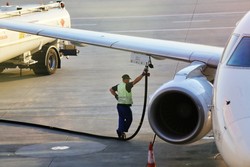Novel simulation tools to reduce aircraft fuel consumption and carbon dioxide emissions
Integrating a large number of new electro-mechanical systems into an aircraft's complex and long-established architecture leaves no room for trial and error. Concise subsystem simulations are already being performed to forecast power consumption and operational parameters for such systems. However, there are various simulation tools in use, and combining the results of subsystem tests to provide an overall picture is problematic. To address this issue, the EU-funded ISSE (Improvement of numerical models for JTI/GRA shared simulation environment) project supported electrical system design for green aircraft by creating a system simulation. Project partners developed a shared simulation environment (SSE) to simulate the static and dynamic performance of on-board aircraft systems that focuses on electrical power absorption and thermal energy production. The SSE modelled the electrical power generation, consumption and regulation within an AEA. Its architecture is based on a co-simulation framework. The ISSE team integrated the complex numerical models of the individual electrical subsystems into this framework. Specifically, scientists integrated models for flight data, energy management, cabin, environmental control, power generation, ice protection, landing gear and flight control into the SSE and can now be co-simulated through a graphic user interface and batch operations. Models are easily interchangeable and can be integrated into a larger simulation of the whole aircraft. The SSE enables simulation models to optimize an AEA's energy management system and thermal architecture. This process is more thorough and accurate than existing solutions. Thanks to the integrated use of advanced and combined simulation techniques, ISSE helped to address the complex issues associated with the supply of electrical power. It greatly contributed to the AEA concept for future green regional aircraft.







